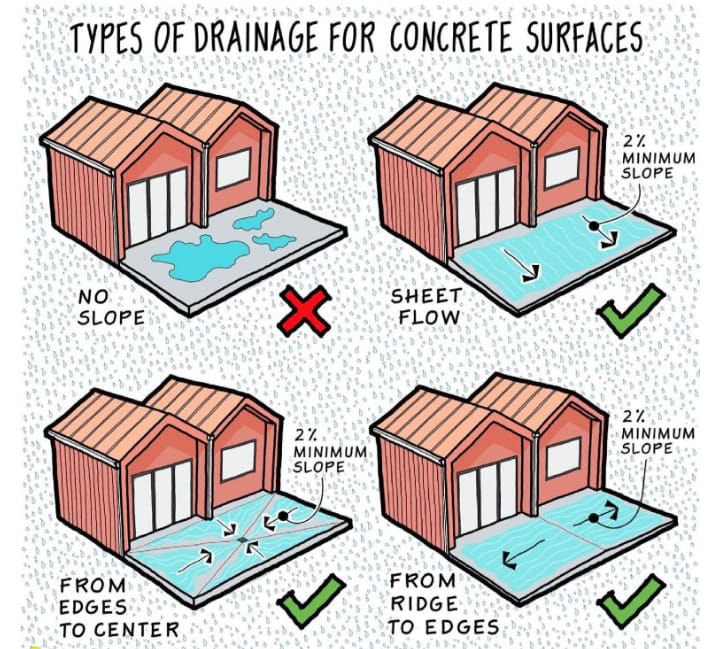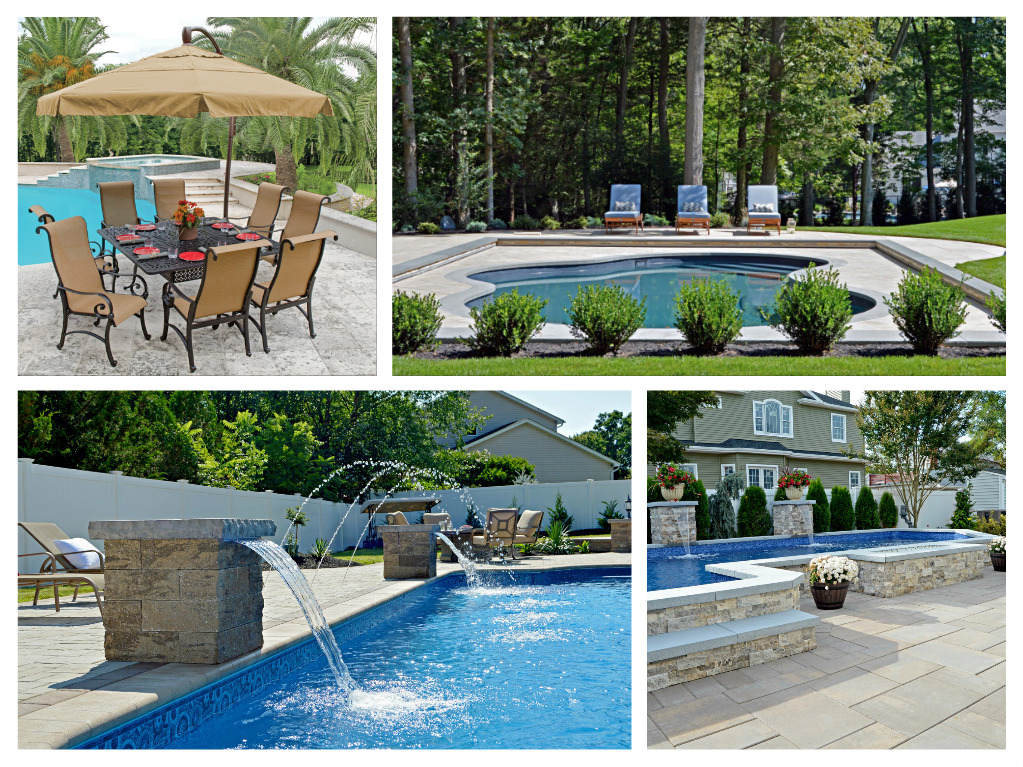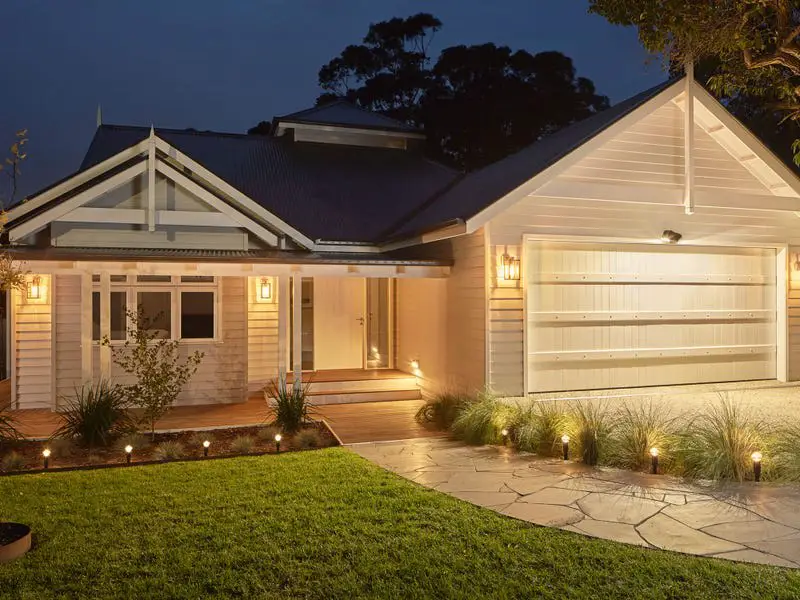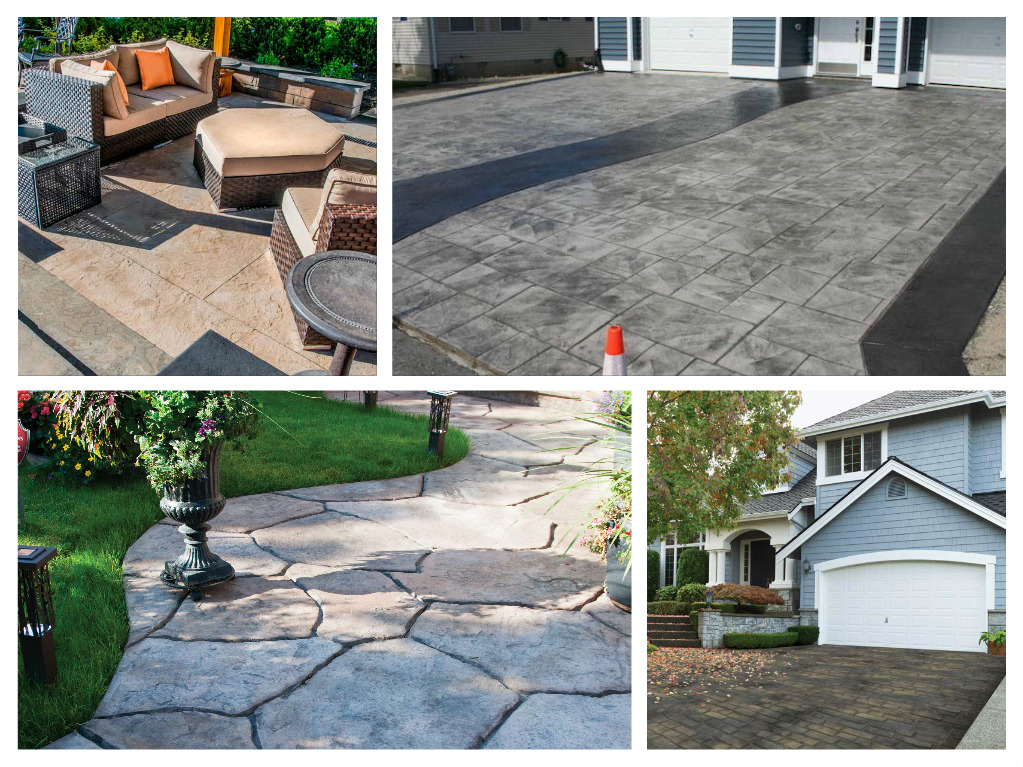When it comes to designing and constructing an exterior driveway, careful consideration must be given to its functionality and longevity. Proper drainage is a crucial aspect to prevent water accumulation and damage to the concrete surface. In this blog post, we will explore the four main types of slopes commonly used for exterior driveways: no slope, sheet flow, from edges to center, and from ridge to edges. By understanding these different slope types, you can make informed decisions to ensure a durable and efficient driveway.
1. No Slope
A driveway with no slope, also known as a flat or level surface, may seem like the simplest option, but it can lead to water pooling and stagnant areas. Without any slope, rainwater and other forms of precipitation will not have a natural pathway to flow away from the surface. As a result, water can accumulate, causing damage to the concrete and creating hazardous conditions for pedestrians and vehicles. It is generally not recommended to have a completely flat driveway unless there are specific design constraints or if additional drainage solutions are implemented, such as drainage channels or catch basins.
2. Sheet Flow
Sheet flow is a popular slope type that encourages water to flow evenly across the surface of the driveway. This method involves creating a slight slope in a single direction, allowing water to sheet off the surface and drain away. The slope is typically minimal, ranging from 1% to 2% (or 1/8 to 1/4 inch per foot). Sheet flow provides a simple and effective solution for proper water drainage, preventing pooling and minimizing the potential for damage to the concrete surface. It is suitable for driveways with large surface areas and no significant obstructions.
3. From Edges to Center
In a driveway with a slope from edges to the center, the surface is designed to direct water towards a central point where drainage is located. This type of slope is commonly used when there are obstructions along the edges of the driveway, such as buildings or landscaping features. By creating a downward slope from the edges towards the center, water is channeled away from potential obstacles and directed to a designated drainage point, such as a catch basin or a grated trench drain. This slope type requires careful planning and positioning of the drainage system to ensure effective water removal.
4. From Ridge to Edges
The slope from ridge to edges, also known as a crowned surface, involves creating a peak or ridge at the center of the driveway, with the surface sloping downward towards the edges. This design allows water to flow off the sides of the driveway and into properly positioned drainage channels or landscaping. The crown is typically subtle, with slopes ranging from 1% to 3% (or 1/8 to 3/8 inch per foot). This type of slope is commonly used when there are no obstructions along the edges of the driveway, providing a straightforward solution for efficient drainage.
Conclusion
Proper drainage is essential for the longevity and functionality of exterior driveways. By understanding the four main slope types – no slope, sheet flow, from edges to center, and from ridge to edges – you can make informed decisions about the design and construction of your driveway. Whether you have a flat or sloping landscape, it is important to plan and implement an appropriate drainage system to prevent water accumulation and potential damage to the concrete surface. Consulting with a professional contractor or engineer can help ensure that your driveway’s slope and drainage meet the necessary requirements for a durable and reliable surface.






